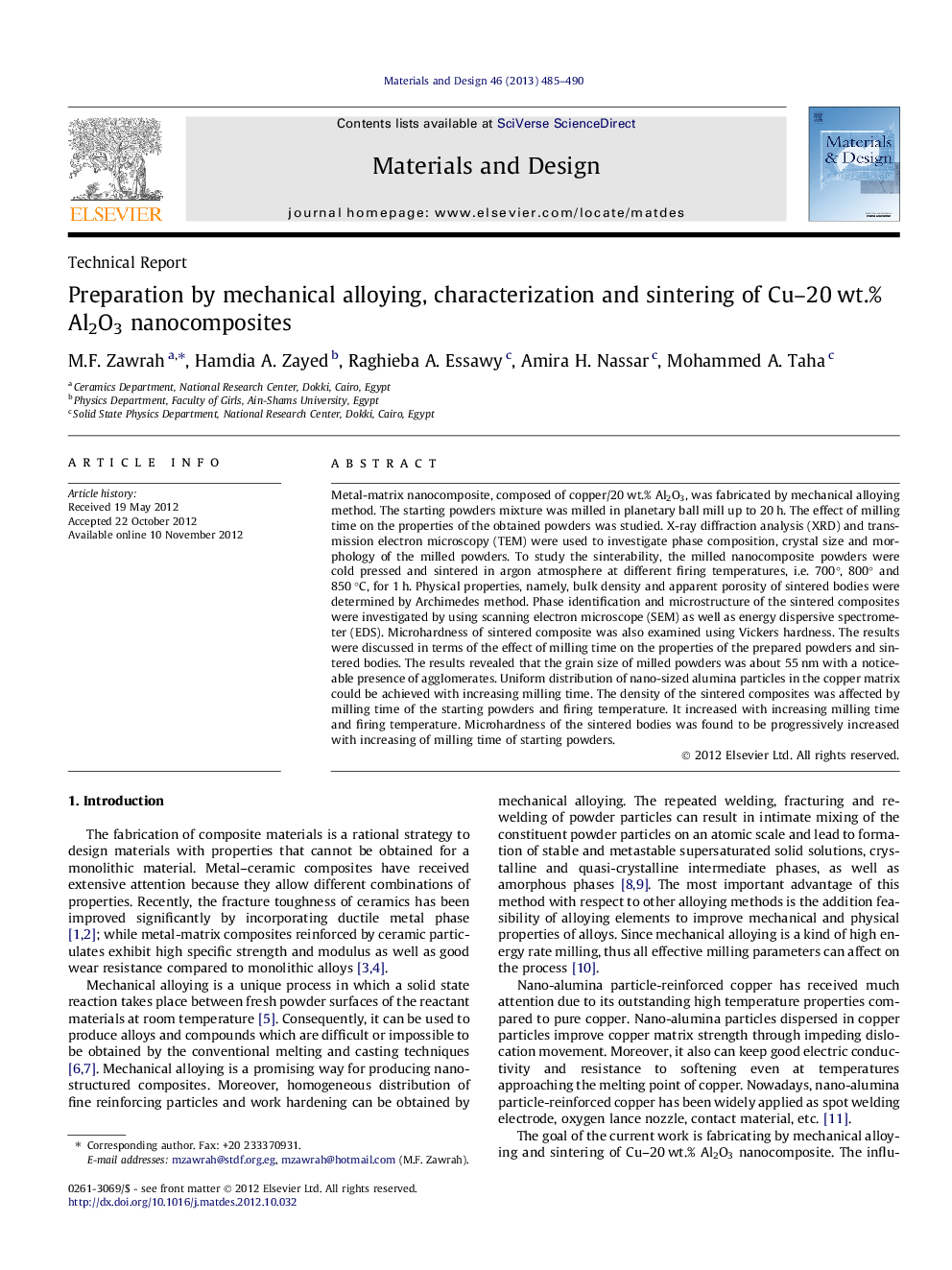| Article ID | Journal | Published Year | Pages | File Type |
|---|---|---|---|---|
| 830170 | Materials & Design (1980-2015) | 2013 | 6 Pages |
Metal-matrix nanocomposite, composed of copper/20 wt.% Al2O3, was fabricated by mechanical alloying method. The starting powders mixture was milled in planetary ball mill up to 20 h. The effect of milling time on the properties of the obtained powders was studied. X-ray diffraction analysis (XRD) and transmission electron microscopy (TEM) were used to investigate phase composition, crystal size and morphology of the milled powders. To study the sinterability, the milled nanocomposite powders were cold pressed and sintered in argon atmosphere at different firing temperatures, i.e. 700°, 800° and 850 °C, for 1 h. Physical properties, namely, bulk density and apparent porosity of sintered bodies were determined by Archimedes method. Phase identification and microstructure of the sintered composites were investigated by using scanning electron microscope (SEM) as well as energy dispersive spectrometer (EDS). Microhardness of sintered composite was also examined using Vickers hardness. The results were discussed in terms of the effect of milling time on the properties of the prepared powders and sintered bodies. The results revealed that the grain size of milled powders was about 55 nm with a noticeable presence of agglomerates. Uniform distribution of nano-sized alumina particles in the copper matrix could be achieved with increasing milling time. The density of the sintered composites was affected by milling time of the starting powders and firing temperature. It increased with increasing milling time and firing temperature. Microhardness of the sintered bodies was found to be progressively increased with increasing of milling time of starting powders.
► We succeeded to fabricate Cu-20 wt.-% Al2O3 nanocomposites by mechanical alloying. ► Morphology and sizes of the powders have been changed after ball milling. ► RD of the sintered composites has been increased with increasing milling time and sintering temperature. ► Dispersion of Al2O3 particles in the composites had considerable effect on the hardness.
